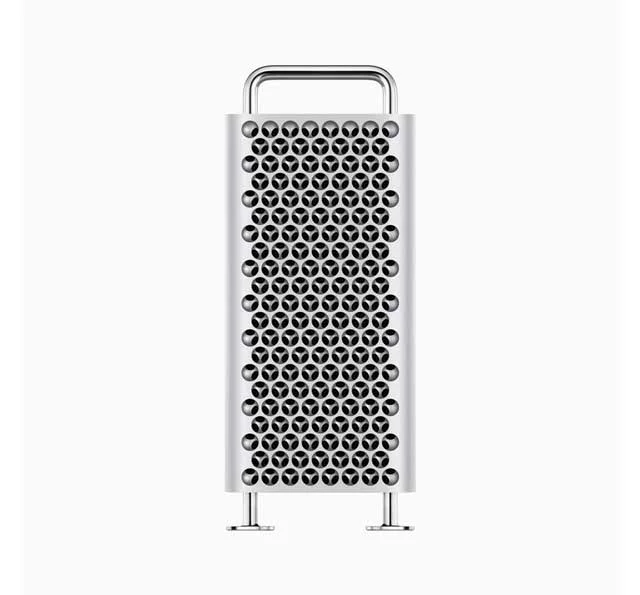As a video editor, you know that performance is key.
Whether you’re working on a short film, a music video, or a corporate video, you want your software to be able to keep up with your vision.
That’s why optimizing performance in Final Cut Pro is so important.
I've been using Final Cut Pro since version 2.
Final Cut Pro is a powerful tool for the editing process, but it can sometimes be a bit resource-intensive.
This can lead to slow rendering times, choppy playback, and other performance issues.
In this blog post, we’re going to go over five tips that you can use to optimize your performance in Final Cut Pro.
With these tips in your toolkit, you’ll be able to get the best performance while editing, get the most out of your software, and create videos that are smooth, polished, and professional.

Use Optimized Media
One of the most important things you can do to get better performance in Final Cut Pro is to create optimized media.
When you import media into your project, Final Cut Pro has to decode and process the file to be able to use it.
This can be a resource-intensive process, especially if you’re working with high-resolution or high-frame-rate footage.
To reduce the load on your system, you should use media that is optimized for editing.
This includes using proxy media, which is a low-resolution version of your original footage that is easier for Final Cut Pro to handle.
There are multiple ways to create optimized media in Final Cut Pro:
- Select the media files you would like to use in your project. Right-click and choose "Transcode Media" and then choose "Create Optimized Media".
- When importing media, check the "Create Optimized Media" box under Transcode Media.
Using optimized media can give you smooth playback performance in Final Cut Pro, especially when working with large or complex projects or editing multicam clips.

Use Proxy Media
Proxy media in Final Cut Pro is lower-resolution media that is easier on the machine to play back.
When using proxy media you can editing and playback your media quickly, enabling you to work faster.
To use proxy media in Final Cut Pro X, follow the steps outlined above for Optimized Media, but choose "Create Proxy Media" instead.
You have two choices for Proxy Media: ProRes Proxy or H.264.
ProRes Proxy is a better quality proxy and will give you smoother playback, but it takes up more disk space than H.264.
For most editing needs, H.264 should be sufficient for creating proxy media.
Once your proxy media is created, select the clips in your Timeline and click on “Use Proxy Media” button in the lower right corner.
This will switch your media to use the proxy media instead of the original media.
To go back to using your original media, click on “Use Original Media” and it will switch back to the original high-resolution media.
Proxy media is a great way to speed up editing by using lower resolution media, while still giving you the option to switch back to the original high-resolution media when needed. So try it out and see how it can help improve your editing workflow!

Manage Your Storage
Another important factor to consider when optimizing performance in Final Cut Pro is your storage setup.
Your system needs enough space to store your media, your project files, and any renders or exports you create. If you run out of space, it can lead to slow performance and even crashes.
To make sure you have enough storage for your projects, you should invest in a fast, reliable drive.
Solid state drives (SSDs) are generally faster and more reliable than hard disk drives (HDDs), so they are a good choice for storing your media and project files.
You can also use external drives to offload files and free up space on your internal drive.
In addition to having enough space, it’s also important to keep your drives organized and well-maintained. Make sure to delete any unnecessary files and use a drive cleaning tool to remove any excess clutter.

Optimize Your Project Settings
The settings you choose in your Final Cut Pro project can also have a big impact on performance.
By optimizing these settings, you can ensure that your system is running as efficiently as possible.
One setting to pay attention to is the “Rendering Quality” option.
This setting determines how much processing power Final Cut Pro uses when creating render files for effects and transitions.
If you set it to “Better Quality,” Final Cut Pro will use more processing power, but your renders will be of higher quality.
If you set it to “Faster Render,” Final Cut Pro will use less processing power, but your renders may not be as high quality.
Another setting to consider is the “Optimized Media Storage Location.”
This setting determines where Final Cut Pro stores your optimized media.
By default, it is set to “In the Event,” which means the media is stored in the same location as your project files.
If you’re running low on disk space, you can change this setting to “On a Specific Drive” and specify an external drive or network location to store your optimized media.
This can help free up space on your internal drive and improve performance.
You should also pay attention to the “Frame Rate” setting in your project. If you’re working with high-frame-rate footage, such as 60 or 120 fps, it can put a strain on your system and give you poor performance in playback and editing.
You can improve performance by changing the “Frame Rate” setting to match the frame rate of your footage. This will help Final Cut Pro process the footage more efficiently.

Use Keyboard Shortcuts
Keyboard shortcuts can help you work faster and more efficiently in Final Cut Pro.
By using shortcuts, you can avoid having to go through menus and dialog boxes, which can save you time and improve performance.
Some of the most useful keyboard shortcuts in Final Cut Pro include:
“J” and “K” for moving forward and backward through your timeline “L” for moving to the next edit point “I” and “O” for setting in and out points “Z” for toggling the zoom level of the timeline
You can find a complete list of keyboard shortcuts in the Final Cut Pro User Guide or by going to Final Cut Pro > Keyboard Shortcuts.

Background Rendering
Final Cut Pro X offers a feature called “Background Rendering,” which can help improve performance when working on complex projects.
When enabled, this feature will automatically background render effects and transitions behind-the-scenes while you continue to work on your project.
This can save you time and make it easier to preview your edits without having to wait for them to render.
To enable Background Rendering, go to Final Cut Pro > Preferences and check the “Background rendering” box.

Use a Fast Computer
One of the most effective ways to get better performance in Final Cut Pro is to use a fast computer.
A powerful computer with a fast processor, plenty of RAM, and a fast graphics card will give you the computing power to handle the demands of video editing much more easily than a slower machine.
If you’re in the market for a new computer, there are a few key things to look for when choosing one for video editing.
First, you’ll want a fast processor, such as an Intel Core i9 or one of the current Mac M1 or M2 processors.
Second, you’ll want plenty of RAM, at least 32 GB or more.
Finally, you’ll want a fast graphics card, such as an NVIDIA GeForce RTX or an AMD Radeon RX.
By investing in a fast computer, you’ll be able to get the most out of Final Cut Pro and any of the other best video editing software applications.
Conclusion
Optimizing performance in Final Cut Pro is crucial for creating professional-quality videos.
By following these five tips, you can make sure that your software is running smoothly and efficiently.
Whether you’re working on a small project or a large one, these tips will help you get the most out of your software and create videos that are polished and professional.
Video Editing Perfomance in Final Cut Pro Frequently Asked Questions
How does GPU speed affect video editing performance in Final Cut Pro?
Faster GPU speeds can improve video editing performance in Final Cut Pro by allowing the software to process graphics and effects more quickly. This can lead to smoother playback and faster rendering times. However, it’s important to note that the CPU and hard drive speed can also have an impact on overall performance.
How does CPU speed affect video editing performance in Final Cut Pro?
A faster CPU can improve video editing performance in Final Cut Pro by allowing the software to process more tasks at once. This can lead to smoother playback and faster rendering times. However, it’s important to note that the GPU and hard drive speed can also have an impact on overall performance.
How does hard drive speed affect video editing performance in Final Cut Pro?
The speed of the hard drive can affect video editing performance in Final Cut Pro by determining how quickly the software can access and save files. A faster hard drive can lead to smoother playback and faster rendering times. It’s also important to make sure you have enough storage space on your hard drive to accommodate all of your video files and project data.
Are there any other factors that can affect video editing performance in Final Cut Pro?
In addition to GPU, CPU, and hard drive speed, other factors that can affect video editing performance in Final Cut Pro include the amount of RAM (memory) on your computer, the complexity of the project, and the type and number of effects and graphics being used. It’s also a good idea to make sure you are running the latest version of the software and that your computer meets the system requirements for running Final Cut Pro.
Table of Contents
- Use Optimized Media
- Use Proxy Media
- Manage Your Storage
- Optimize Your Project Settings
- Use Keyboard Shortcuts
- Background Rendering
- Use A Fast Computer
- Conclusion
- Video Editing Perfomance In Final Cut Pro FAQ
Final Cut Pro Related Posts
Final Cut Pro vs. Premiere Pro 2023
How to Create a Seamless Transition in Final Cut Pro
Mastering the Essentials: A Beginner's Guide to Final Cut Pro Keyboard Shortcuts
Optimizing Performance in Final Cut Pro
How to Work With iPhone HDR Footage in Final Cut Pro in 2023
All About the Final Cut Pro Student Discount
Video Editing Related Posts
Adobe Creative Cloud for Video Editing
Top 10 Video Editing Software for Mac
The Benefits of Dual-Monitor Setups for Video Editing
How to Choose the Right Video Editing Monitor for Your Needs
Best Monitors for Video Editing
Best Video Editing Software in 2023
Best Mac for Video Editing in 2023
(Almost) 50 Mistakes Every New Video Producer Makes
Breakthrough AI Tools: Elevate Your Video Production Game!
